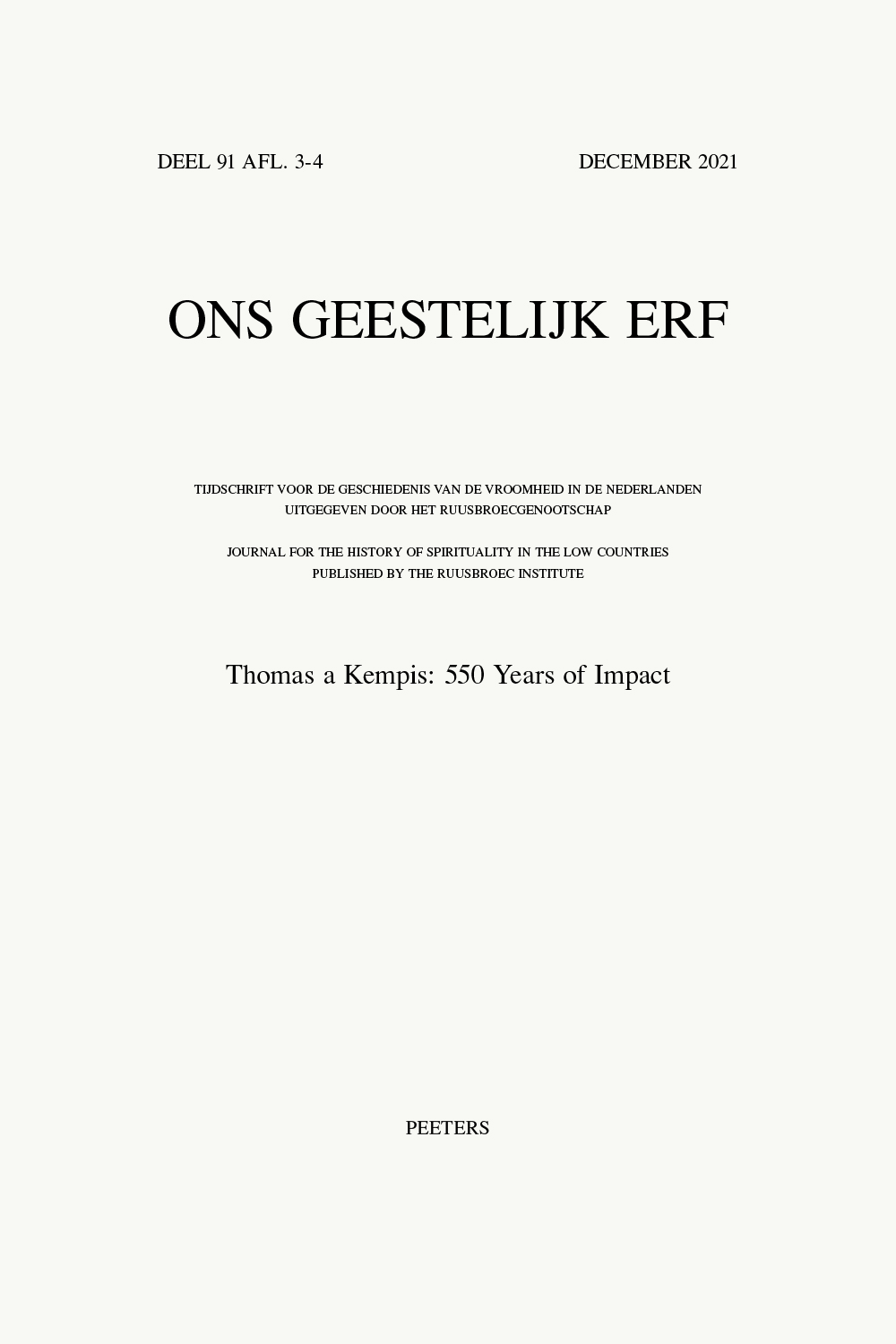next article in this issue  |

|
Document Details : Title: Meum summum desiderium est te habere Subtitle: De Eucharistie als sacrament van de godsontmoeting voor alle gelovigen, ca. 1200 - ca. 1500 Author(s): CASPERS, Charles M.A. Journal: Ons Geestelijk Erf Volume: 70 Issue: 3 Date: september 1996 Pages: 193-215 DOI: 10.2143/OGE.70.3.2003404 Abstract : With the small boy Achas (a character in the Bonum universale de apibus of Thomas of Cantimpré) as an example, this article sketches how in the thirteenth century, starting in the Southern Low Countries, a new form of piety developed. The main characteristic of this new piety was a fixation on the communion, which had the purpose to unite the soul of the communicant with Christ. During the later Middle Ages most people limited themselves to one or a few ‘sacramental communions’ (vid. by consuming the Host) a year. For the rest they gave their attention only to the ‘spiritual communion’ (vid. without consuming the Host). During this period the sacramental communion was never popular, because people were afraid to be unworthy for this act of faith (cf. 1 Cor 11, 29). Besides the nearly universal preference for the spiritual communion there was also a voice that called the faithful to communicate sacramentally more often. This voice got louder and louder and resulted in the end, after the Council of Trent, in a different communion practice within the Catholic Church. Thus, by making a case for the sacramental communion with the argument “that it is better to communicate sacramentally out of love than not to do this out of fear”, the sign value of the sacrament was retained and in addition the tendency that had threatened often before, to ‘spiritualize’ the visible church, was neutralized. |
|
